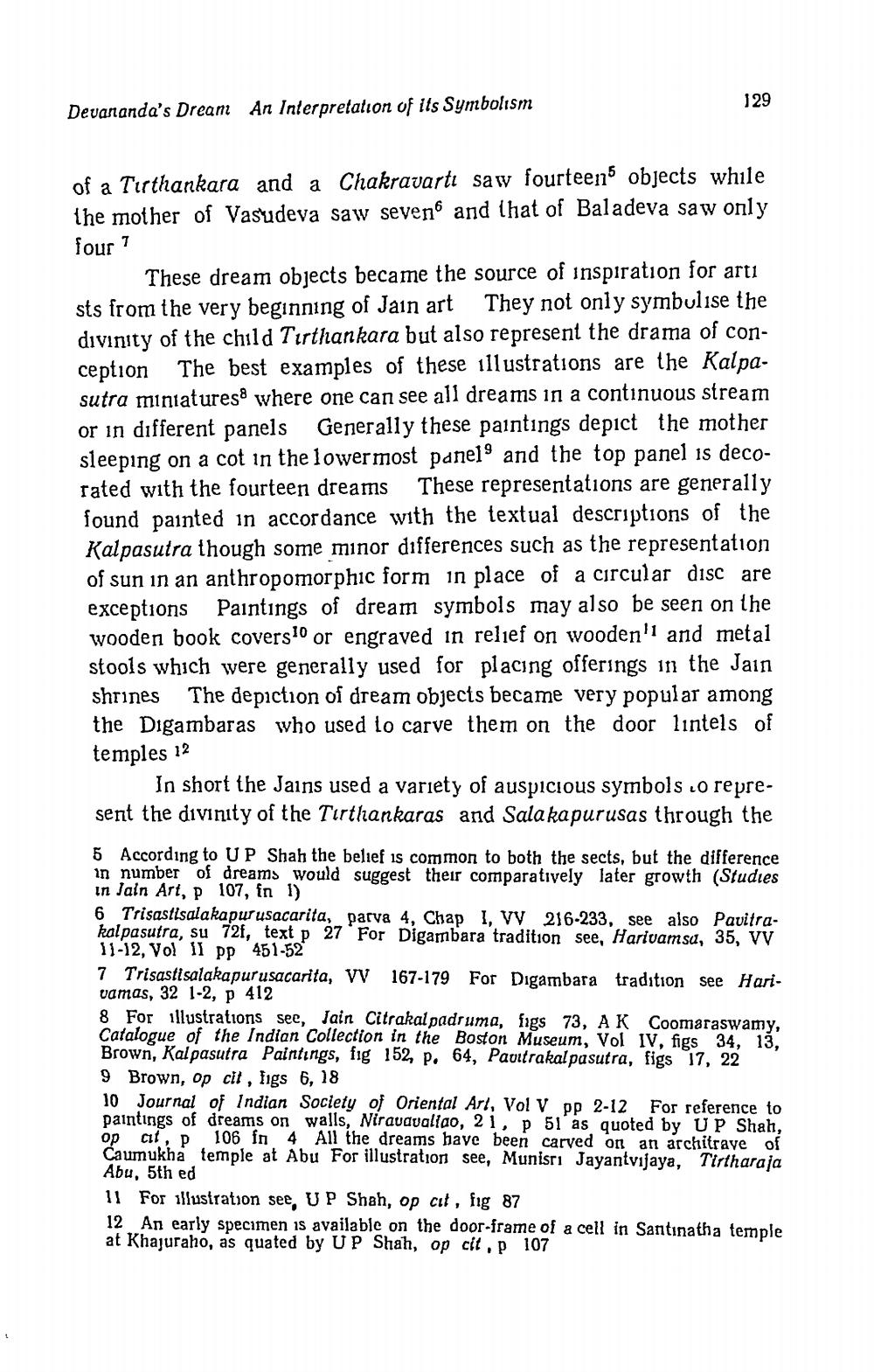________________
129
Devananda's Dream
An Interpretation of its Symbolism
of a Tirthankara and a Chakravartı saw fourteen objects while the mother of Vasudeva saw sevens and that of Baladeva saw only four 7
These dream objects became the source of inspiration for arti sts from the very beginning of Jain art They not only symbulise the divinity of the child Tirthankara but also represent the drama of conception The best examples of these illustrations are the Kalpasutra miniatures where one can see all dreams in a continuous stream or in different panels Generally these paintings depict the mother sleeping on a cot in the lower most panels and the top panel is decorated with the fourteen dreams These representations are generally found painted in accordance with the textual descriptions of the Kalpasutra though some minor differences such as the representation of sun in an anthropomorphic form in place of a circular disc are exceptions Paintings of dream symbols may also be seen on the wooden book coverslo or engraved in relief on wooden'1 and metal stools which were generally used for placing offerings in the Jain shrines The depiction of dream objects became very popular among the Digambaras who used to carve them on the door lintels of temples 12
In short the Jains used a variety of auspicious symbols to represent the divinity of the Tirthankaras and Sala kapurusas through the 5 According to UP Shah the belief is common to both the sects, but the difference in number of dreams would suggest their comparatively later growth (Studies in Jain Art, P 107, in 1) 6 Trisastisalakapur usacarita, parva 4, Chap I, VV 216-233, see also Pavitrakalpasutra, su 721, text p 27 For Digambara tradition see, Harivamsa, 35, VV 11-12, Vol 11 pp 451-52 7 Trisastisalakapur usacarita, v 167-179 For Digambara tradition see Harivamas, 32 1-2, p 412 8 For illustrations see, Jain Citrakal padruma, iigs 73, AK Coomaraswamy, Catalogue of the Indian Collection in the Boston Museum, Vol IV, figs 34, 13. Brown, Kal pasutra Paintings, fig 152 p. 64, Pauitrakal pasutra, figs 17, 22 9 Brown, op cit, figs 6, 18 10 Journal of Indian Society of Oriental Art, Vol V pp 2-12 For reference to paintings of dreams on walls, Niraudualiao, 21, p 51 as quoted by UP Shah, op cit, p 106 in 4 All the dreams have been carved on an architrave of Caumukha temple at Abu For illustration see, Munisri Jayantvijaya, Tirtharaja Abu, 5th ed 11 For illustration see, UP Shah, op cit, fig 87 12 An early specimen is available on the door-frame of a cell in Santinatha temple at Khajuraho, as quated by UP Shah, op cit, p107




